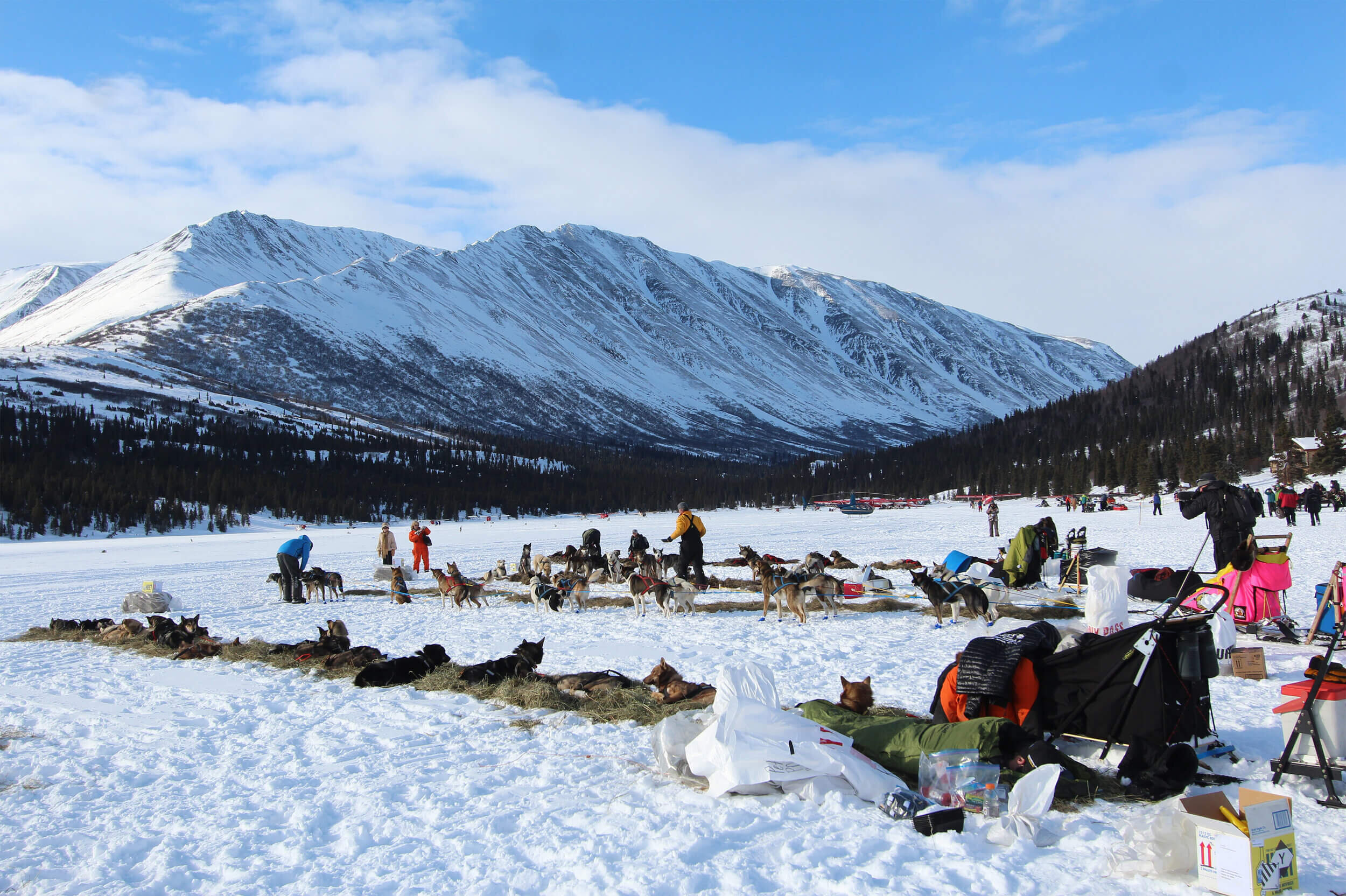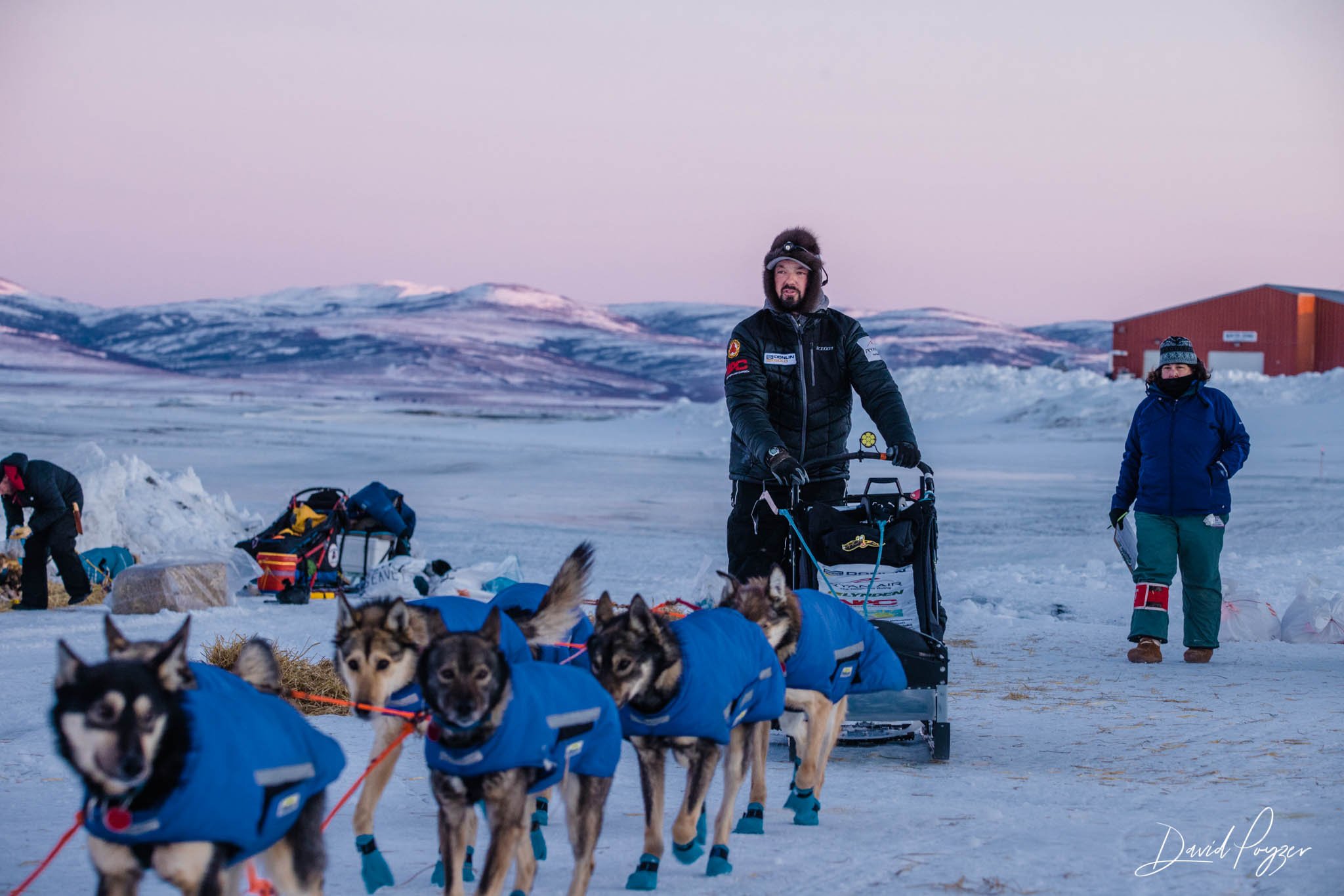Checkpoints
Drop bags lined up in alphabetical order at a checkpoint
Credit: Mille Porsild – http://facebook.com/RunningSleddogs
The dog teams in a long-distance sled dog races very rarely start out the race carrying all the supplies they will need and use during the race. Instead each musher prepare “drop bags” with their supplies and extra gear, which is then sent out by the race to resupply points established along the race route. These resupply points are known as “checkpoints.”
Checkpoints can be extremely basic, like a wall tent set up on the tundra; Or they can be fancy set-ups, offering the mushers some luxuries like access to electricity, hot water, microwaves, food, a warm place to sleep – be it on the floor or on rare occasions even a bed.
Coming into a checkpoint mushers and their dog teams are often greeted by a welcoming crowd.
Credit: Mille Porsild – http://facebook.com/RunningSleddogs
Checkpoints are where mushers interact with race officials and work with race veterinarians to constantly monitor that all the dogs on a team are healthy and performing to continue running down the trail. When a dog is for example getting tired or possibly has developed an injury, the musher will leave the dog in the checkpoint under care of the veterinary team for the dog to then be returned home and no longer continue racing. This is often referred to as a “dropped dog,” or today in the Iditarod race it is called a “return dog.”
When a dog team arrives at a checkpoint they are met by a ‘checker’ that writes down what time they arrived, how many dogs are on the team and the musher signs the “check-in” protocol by their name and bib number. Similarly when the team takes off from a checkpoint, the musher ‘signs out’ as race official registers the time of departure.
Every race has a list of mandatory equipment that the mushers must carry in their sled from start to finish of the race. That the musher has not lost any of this equipment en-route is checked by a race official when the team pulls into checkpoints. While the exact list vary slightly from race to race, generally mandatory equipment include: an ax, snowshoes, sleeping bag, emergency dog food, a cooker and fuel to boil water for the dogs while on the trail, dog booties, dog jackets, and the veterinary dog book. This book is where the veterinary team in the checkpoints make notes both so that the musher has a written overview of observations, and so that the vets from checkpoint to checkpoint can see the status of each dog throughout the race thus easily keeping track of the health of the dogs.
Veterinarians in the checkpoint adding notes to the vet book while the musher continues to care for the dogs.
Credit: Mille Porsild – http://facebook.com/RunningSleddogs
The veterinary teams work with the musher on checking up on the dogs in the team while in the checkpoint, whether it’s a quick stop or the team is resting for hours. This involves such as making sure the dogs are not sore by stretching and flexing the joints and muscles, temperature check, listening to heart and lungs, and addressing any questions or concerns that the musher may have in taking best possible care of the athletes on their team.
As the team pulls into the checkpoint they will pass the row of drop bags where they can grab their own or they are handed their drop bags. Each drop bag packed by the musher must contain all they need in this checkpoint and on the trail till the next checkpoint. The distances between checkpoints vary throughout a race and from race to race. The race in the world with the most checkpoints is the Iditarod race. There are 20-21 checkpoints depending on whether it is a year that have teams running what is known as the northern or southern route. The distance between checkpoint in Iditarod is as short as 18 miles / 29 km (McGrath to Takotna) and as long as 85 miles / 137 km (Kaltag to Unalakleet). In the other Qrill Pet Arctic World Series races we see 7 checkpoints in Femundsløpet 650, 8 checkpoints in the Beargrease race and Volga Quest has 7 checkpoints.
Rainy Pass, one of the many checkpoints in the Iditarod race. In the front it is 2019 Iditarod Champion Pete Kaiser in his sleeping bags next to the sled catching some rest with the dogs.
Credit: Mille Porsild – http://facebook.com/RunningSleddogs
The checkpoints have straw available. If a musher is not actually stopping in the checkpoint to rest, they will often be seen loading straw onto their sled so that they have it to lay out for the dogs to sleep on when they stop somewhere on the trail en route to the next checkpoint. If a musher is stopping to rest in the checkpoint they will grab the straw and once their team is ‘parked’ they lay out the straw for the dogs to lie on. The straw is an important cue for the dogs that its time to relax and rest. This is a routine that mushers make great effort to teach their dogs during training in preparing for racing.
Mushers are not required to rest in checkpoints – except for mandatory rests per the rules of individual races – but many of them opt to do so. A checkpoint often makes for ease in getting chores done, but what can be less desirable is that they are also swarming with activity.
Mandatory rest is a number of hours that the race requires a musher to stop and rest the team over the course of the race. In the Iditarod for example, this is 40 hours. Over the course of the race, all teams must take one 24-hour break. This can be taken at any checkpoint along the race route as the musher determines best suited for his or her team. In addition they must stop 8 hours at one of the checkpoints on the Yukon River, and stop 8 hours in the White Mountain checkpoint – which is 77 miles / 124 km from the finish line in Nome. This by no means accounts for all the rest mushers take with their team during the race. A top competitive team that run the approx. 1000 miles (1600 km) from Willow to Nome in 8-9 days, is generally stopped resting between 80-some to 90-some hours.
Great planning and much strategy go into planning out drop bags and rest time or no rest in the checkpoints along a race route.
Iditarod Checkpoints
(1) ANCHORAGE - CEREMONIAL START, SATURDAY
(2) WILLOW - RACE RESTART, SUNDAY
(3) SKWENTNA - ALL MUSHERS HIT THIS CHECKPOINT AT THE JUNCTION OF SKWENTNA AND YENTNA RIVERS THE FIRST NIGHT OF THE RACE. AS MANY AS 40 TEAMS MAY CAMP HERE.
(4) FINGER LAKE - AFTER FINGER LAKE COMES THE TREACHEROUS DESCENT DOWN HAPPY RIVER GORGE.
(5) RAINY PASS - AT 3,771 FEET (APPROX.. 1250 M), THE HIGHEST POINT ON THE TRAIL. THE ACTUAL CHECKPOINT IS ON PUNTILLA LAKE.
(6) ROHN - WAS AN ORIGINAL IDITAROD ROADHOUSE FOR DOG TEAMS CARRYING MAIL. THE ROADHOUSE IS GONE, REPLACED BY A CABIN BUILT IN THE 1930S.
(7) NIKOLAI - VILLAGE OF ABOUT 100 PEOPLE AT END OF BUMPY 75-MILE / 120-KM RUN ACROSS THE FAREWELL BURN
(8) MCGRATH - ONE OF THE LARGER COMMUNITIES (POPULATION 347) AND TRANSPORT HUB
(9) TAKOTNA - PRETTY, WELCOMING VILLAGE KNOWN FOR ITS FRESH PIES. FAVORED SPOT TO TAKE THE 24-HOUR LAYOVER.
(10) OPHIR - GHOST TOWN.
(11) IDITAROD - ABANDONED MINING TOWN HALFWAY ALONG SOUTHERN ROUTE. FIRST MUSHER HERE GETS $3,000 IN GOLD.
(12) SHAGELUK - OPEN WATER ON THE TRAIL FROM IDITAROD CAN BE A PROBLEM. 507 MILES / 815 KM TO NOME.
(13) ANVIK - FIRST CHECKPOINT ON THE YUKON RIVER, WHICH MUSHERS FOLLOW FOR 148 MILES / 240 KM.
(14) GRAYLING - LAST VILLAGE UNTIL MUSHERS REACH KALTAG, 130 MILES UPRIVER. POPULATION 194.
(15) EAGLE ISLAND - RALPH CONASTER'S CABIN IS THE ONLY DWELLING HERE. FIERCE HEADWINDS OFTEN SLOW MUSHERS.
(16) KALTAG - MUSHERS LEAVE YUKON RIVER AT VILLAGE OF 230.
(17) UNALAKLEET - THE BIGGEST TOWN (POPULATION 747) BETWEEN ANCHORAGE AND NOME AND THE FIRST ON NORTON SOUND
(18) SHAKTOOLIK - HURRICANE-VELOCITY WINDS AND GROUND BLIZZARDS CAN CUT VISIBILITY TO ZERO QUICKLY. TRAIL CROSSES NORTON SOUND TO KOYUK.
(19) KOYUK - ONCE TO KOYUK, THE REST OF THE TRAIL IS OVER LAND. JUST 171 MILES / 275 KM TO NOME.
(20) ELIM - CHECKPOINT NORMALLY SHELTERED FROM THE WIND
(21) GOLOVIN - TRAIL RUNS STRAIGHT FOR 10 OF THE 18 MILES / 29 KM TO WHITE MOUNTAIN, THEN CROSSES FISH RIVER DELTA.
(22) WHITE MOUNTAIN - MUSHERS TAKE FINAL MANDATORY REST HERE, AN EIGHT-HOUR STOP. 77 MILES / 124 KM TO NOME.
(23) SAFETY - LAST CHECK, 22 MILES / 35 KM FROM FINISH.
(24) NOME - FINISHING LINE - END OF RACE







































